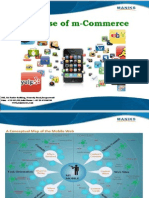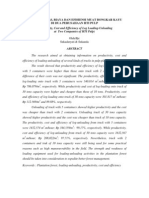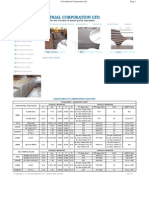0% found this document useful (0 votes)
3 views4 pagesMobile Commerce Assignment
Mobile Commerce (M-Commerce) involves transactions conducted via mobile devices and has rapidly evolved from early services like SMS-based purchases to mainstream applications such as mobile wallets and shopping apps. It offers advantages like convenience and speed but faces challenges including security risks and the digital divide. The future of M-Commerce looks promising with advancements in technologies like AI, 5G, and blockchain.
Uploaded by
B.yadviCopyright
© © All Rights Reserved
We take content rights seriously. If you suspect this is your content, claim it here.
Available Formats
Download as DOCX, PDF, TXT or read online on Scribd
0% found this document useful (0 votes)
3 views4 pagesMobile Commerce Assignment
Mobile Commerce (M-Commerce) involves transactions conducted via mobile devices and has rapidly evolved from early services like SMS-based purchases to mainstream applications such as mobile wallets and shopping apps. It offers advantages like convenience and speed but faces challenges including security risks and the digital divide. The future of M-Commerce looks promising with advancements in technologies like AI, 5G, and blockchain.
Uploaded by
B.yadviCopyright
© © All Rights Reserved
We take content rights seriously. If you suspect this is your content, claim it here.
Available Formats
Download as DOCX, PDF, TXT or read online on Scribd
/ 4
























































































